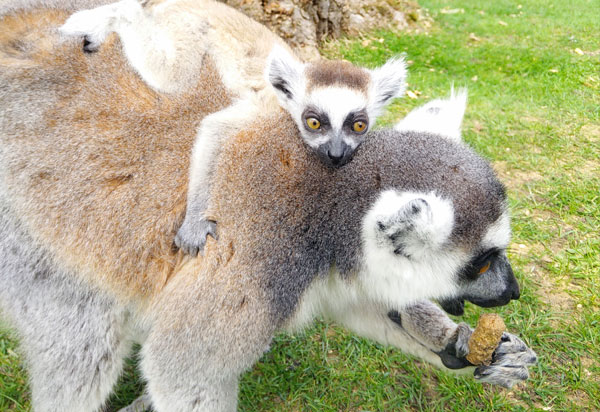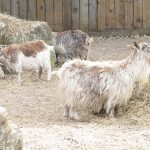They Like To Move It, Move It!

Shooting to global fame in the animated film, Madagascar, the humble Lemur has become one of our most liked visitor attractions. And, they’ve just had babies – always an exciting time for any family!
They are now about five weeks old and can be seen either clinging to their mum’s chest or taking the scenic option by riding around on her back. They’re also displaying their naturally inquisitive nature as sometimes they are brave enough to jump to the ground and take a look at the fruit and veg being fed to the adults – even though they can’t eat it just yet!
We keep three species of lemurs at the park – ring-tailed lemurs, red-bellied lemurs and mongoose lemurs. And, getting back to that film, King Julian might be the leader of the lemur troop in animation land, but this would never happen in real life as it’s the girls who are in charge!
Our ring-tailed troop is led by Ruth, who is also our oldest lemur at 20 years of age – this is impressive as wild females rarely make it past 16!
A lemur is classed as primate that comes from Madagascar, and there are around 100 species found there today. Unfortunately, almost all of them are threatened or endangered. 17 species have become extinct in the past 26,000 years, all of them larger than the largest lemurs found today, including a gorilla-sized, sloth-shaped, 200kg species! It is thought that there are around 2,000 ring-tailed lemurs in captivity but in the wild they are classed as endangered and their population has dropped by around half in the last 36 years. Their main threat is habitat destruction due to land being cleared for humans to keep livestock, but they are also affected by charcoal production and droughts as well as being hunted for meat. It is important that zoos maintain a stable worldwide population of lemurs in case the destruction of the Madagascan rainforests continues.
Lemurs can be quite vocal animals and rely heavily on scent marking to claim their territory. They are excellent at climbing and jumping through the trees. They are not able to grasp branches with their long tail, but would use it to balance to ensure they don’t fall from the trees. Their hands and fingers are extremely mobile so they are able to hold food objects and grab the branches when climbing.
The new babies can be found in our walkthrough lemur enclosure, and your best chance of seeing them is at the 2pm lemur talk and feed. Or, you could enjoy our half hour Lemur Encounter which must be pre-booked.


